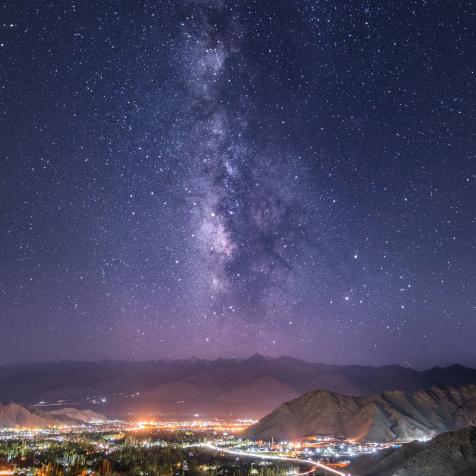.jpg.rend.hgtvcom.616.616.suffix/1567785339053.jpeg)
India's Lunar Leap: The Chandrayaan-2 Mission to the Moon
India is set to become the fourth nation to land on the moon, behind the United States, Soviet Union, and China. Here's what you need to know...
The Indian Space Research Organization (ISRO) launched the Chandrayaan-2 on July 22, 2019, atop the Geosynchronous Satellite Launch Vehicle Mark III rocket from the Satish Dhawan Space Centre in Sriharikota. Just over a month later, the Chandrayaan-2 orbiter now hovers 100 meters above the lunar surface.
India is seeking to become the fourth country to make a soft landing on the surface of the moon; following the United States, Soviet Union, and China. Additionally, the Chandrayaan-2 will become the first lunar mission to land on the southern polar region. The goal of the mission is to map the topography of the region and examine minerals, the exosphere, elemental abundance, and even possible seismic activity.

In 2008, the Chandrayaan-1 was launched into orbit to kick-off India’s ascent into space exploration. India’s Chandrayaan-2 takes a giant leap forward in tackling lunar exploration — whereas the former mission explored the lunar surface from orbit.
The Chandrayaan-2 is equipped with an orbiter, lander, and the rover Pragyan. Once settled on the surface the orbiter’s cameras, spectrometers, and radar will begin examining the surface in hopes of finding lunar water and hydroxyl (molecules containing the oxygen and hydrogen bond).
The Vikram lander, which also includes the Pragyan rover, disengaged from the Chandrayaan-2 orbiter on Monday, September 2nd, in preparation of today's historic landing. Approximately four hours after Vikram's landing, the Praygayn rover will be deployed. The Vikram lander and Pragyan rover are designed to operate for one lunar day (14 earth days), but the Chandrayaan-2 is expected to spend a full year studying the moon from above.
Touchdown is scheduled for, September 6th between 1 pm and 3 pm EST. The ISRO will live stream the landing from its website (isro.gov.in).
SEPTEMBER 10, 2019: The Chandrayaan-2 mission to land a rover on the moon appears to have ended in failure after scientists lost contact with the spacecraft just 2 km above the Moon's surface. Though the ISRO confirmed that cameras aboard the Chandrayaan-2 orbiter have captured thermal images of the lander, what exactly went wrong and the degree of damage is unclear. Teams of scientists are currently working to establishing communication with the lander.
Photos courtesy of Discovery India


















